Waltzing Widow
April 22nd, 2012
Our town is given to amateur theatrics, as many were back in the day (and too few are now). In a couple of weeks my sweetheart and I will take part in a musical revue featuring songs from the turn of the 20th century. He — a professional musician — is going to sing “In the Good Ol’ Summertime” accompanied by his own guitar. I — who usually refrain from singing publicly out of respect for the rest of humanity — decided to be grandiose and volunteered to sing “The Merry Widow Waltz.”
This lilting waltz is the grande finale of an operetta by Austro-Hungarian composer Franz Lehár called “The Merry Widow,” or “Die lustige Witwe.” Based on a mid-19th century play about a rich widow being wooed for her bank roll, the production made its Vienna debut in 1905. In 1934 it became a Hollywood musical under the direction of Ernst Lubitsch with new English lyrics by Tin Pan Alley’s own Lorenz Hart. Jeanette MacDonald and Maurice Chevalier starred.
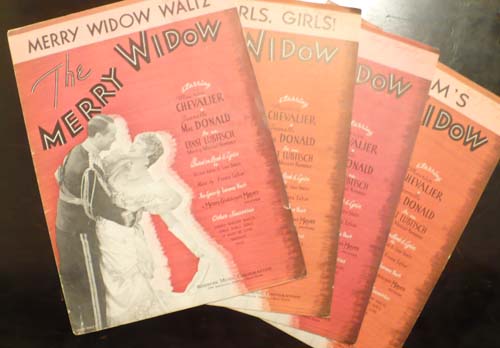
Believe it or not, I’d already decided to sing the song when I came across this sheet music in one of my moving boxes. It belonged to my grandmother, who dated it 1935 in the upper right corner; presumably the year she purchased it. She also had three other lead sheets from “The Merry Widow” — more than she owned for any other musical. What does that say about genetics? Of course I immediately discarded my old arrangement and opted to use this one, along with the new lyrics (I’d been using a 1930 arrangement and translation published in the Maxwell House Showboat music book).
Luckily, a supremely talented friend who is accompanying the rest of the revue has offered to play my music as well. I was trying to both sing and play, but kept forgetting to breathe. Which will be especially important since I’m going to do all this in an outfit that requires a Grecian-Bend corset…
Laundry Day
April 21st, 2012
One of the greatest luxuries in our new home is the washing machine. After years of trekking to the laundromat, it’s still hard to believe we can now do the washing in our very own laundry room.
There’s nothing old fashioned about our new front-loading washing machine and gas dryer — I snagged them last fall during a Black-Friday appliance sale in anticipation of our new home. The control panels are computerized and sensors inside the machines figure out how much washing or spinning or drying to do. They even play a little song to let you know they’re through. But I must admit I love the old ways too.
I’m not quite ready to break out the washboard (actually, I haven’t come across it in the course of unpacking yet), but I did have a sudden craving for sun-dried clothes this morning.

I haven’t figured out exactly where to hang the clothesline yet, so I hauled out my (paternal) great-grandmother’s wooden drying rack. Based on the construction (it snaps open with metal springs) and family history, I’m guessing it’s about 100 years old. Which means I shouldn’t have it sitting out in the sun covered in wet clothes. Yeah, I know. But there are plenty of drying racks preserved in museums, and this one means more through continuing to use it the way generations before me did.
They that wash on Monday have all the week to dry.
They that wash on Tuesday are not so much awry.
They that wash on Wednesday are not so much to blame.
They that wash on Thursday, wash for very shame.
They that wash on Friday, wash in dire need.
They that wash on Saturday are lazy sluts indeed!English Nursery Rhyme
Hoping no one notices that I’m posting this on a Saturday…
Outfit Inspiration
April 17th, 2012
While gradually gathering my sewing supplies from a series of vaguely marked boxes (my own fault for labeling them as “stuff”) I have been focusing my energy on dreaming rather than doing. Edwardian and Art Nouveau figure largely into my planned projects, with a healthy dose of the eccentric and absurd.
Costume & Construction posted this beauty a few weeks ago and I have been scheming ever since:
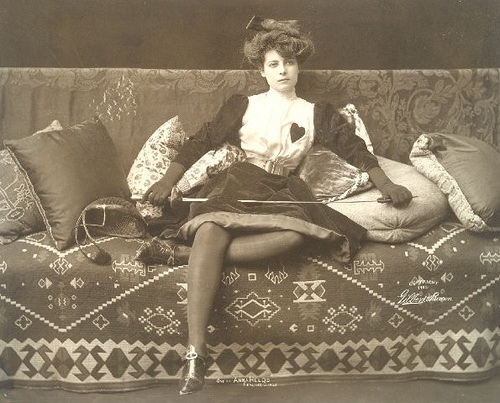
I’m also very taken with the 19-teens styles, as the Edwardian silhouette began to soften into the 20th century. It seems like an aesthetic that could even be worn today without occasioning too many odd looks.
An aside:
Let’s face it, there’s simply no way to look normal while wearing a hoop skirt to the grocery store. And I detest being the center of attention because of how I am dressed. Perhaps that’s an unfortunate quirk of character given my penchant for unusual and untimely clothing. But if I may paraphrase Emily Post, one should always strive to be unremarkably dressed. If you are going to wear something that will make people stare, be VERY sure that the stares are admiring.
Back to our regularly scheduled program:
In addition to expanding my wardrobe (and possibly designing some garments to share with the world — more on that soon), I’ve also been thinking about costumes for upcoming events, both public and private. For years I’ve wanted to host a “Caesar & Cleopatra” dinner. Inspired by the immortal Shavian play, we’d lounge on cushions, feasting on roasted fowl and dates soaked in rosewater under the evening sky. We’d stop just before the murder of Pothinas…
A key point to establishing the atmosphere for such an evening would be getting all the men to dress as Romans and all the women as Egyptians. Since my inspiration is Shaw’s play, not actual historical events, I’d rather choose a costume intended by the 19th century to evoke ancient Egypt instead of attempting an accurate version of a late Ptolemaic ensemble.
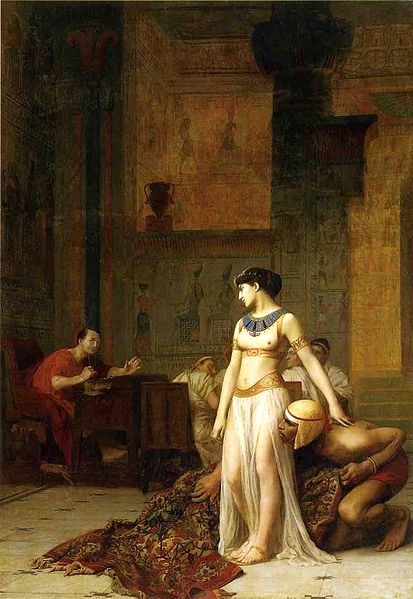
This 1866 painting of Cleopatra confronting Caesar by Jean-Léon Gérôme, for example.
Swing Your Partner
April 16th, 2012
Do any of you remember the Amazon Drygoods catalogue? Now they’ve got a website of course, but I’ve got such fond memories of poring through their pink-paper-bound booklets, dreaming about all the historic and ethnic costumes I’d make.
I did end up buying quite a few patterns through them, including my first forays into Ms. Altman’s excellent Past Patterns. Among the patterns that my mother firmly discouraged however were the square dance dresses. She realized, as I was not then able, that I would have absolutely no use for a square dance dress in northern Delaware. Looking back, I can see that she was probably right. But I always carried a secret regret.
So you can imagine my joy when I found a whole pile of the very same patterns at the local thrift store. For 90 cents a piece!
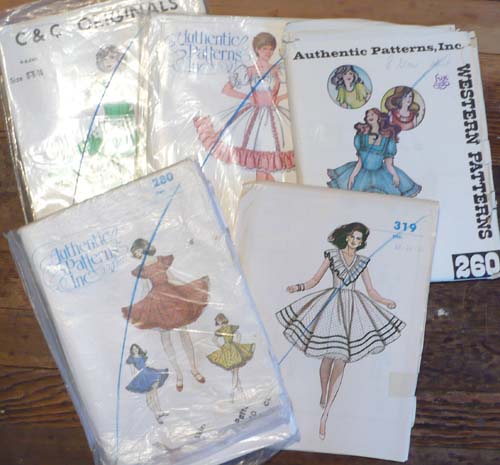
Which of course begs the question, what on earth am I going to do with a square dance dress on the central coast of California?
Hmm, that reminds me — gingham is on sale at Walmart…
E’en Tho’ It Be a Cross
April 15th, 2012
Today being the 100th anniversary of the sinking of the Titanic, I was reminded of the beautiful old hymn that famously played while the great ship went down. Namely, Nearer My God to Thee.
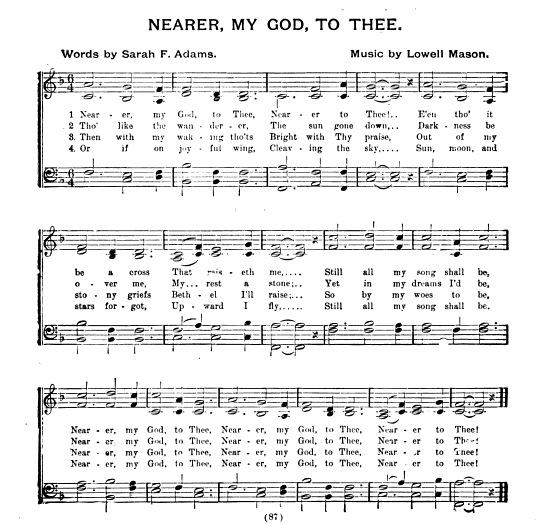
I learned to play Nearer My God to Thee a few years ago for our annual funeral reenactment at the Merchant’s House Museum. It’s not actually a funereal hymn, but the one we’d been using, When Our Heads Are Bowed with Woe, was too obscure for the participants to follow on first hearing. A few months later, I recorded the hymn on the Museum’s 1850s harmonium so that it could be played at subsequent reenactments. There’s really nothing quite like 75 voices raised in a 150-year-old hymn, marching through the streets of the East Village.
My dear friend over at Costume & Construction sent me a link to this early wax cylinder recording of Nearer My God to Thee.
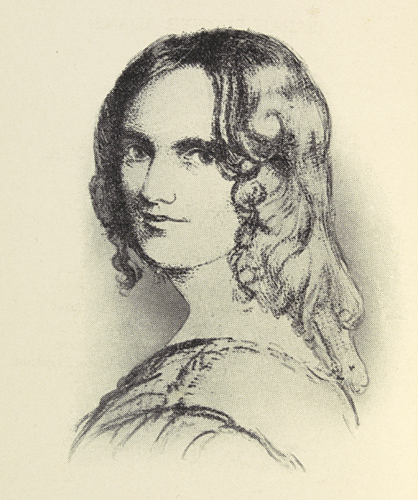
Sarah Flower Adams
The life and story of the poetess who wrote the immortal words is summarized in Illustrated History of Hymns and their Authors, 1875.
This language was the heart-utterance of Mrs. Sarah Flower Adams, daughter of Benjamin Flower, editor of The Cambridge Intelligencer, and wife of William B. Adams, an eminent engineer, and also a contributor to some of the principal newspapers and reviews.
She was born February 22, 1805.
Her mother is described as a lady of talent, as was her elder sister Eliza, who was also an authoress.
She was noted in early life for the taste she manifested for literature, and in maturer years, for great zeal and earnestness in her religious life, which is said to have produced a deep impression on those who met with her. Mr. Miller says: “The prayer of her own hymn, ‘Nearer, my God, to Thee,’ had been answered in her own experience. Her literary tastes extended in various directions. She contributed prose and poetry to the periodicals, and her art-criticisms were valued. She also wrote a Catechism for children, entitled ‘The Flock at the Fountain’ (1845). It is Unitarian in its sentiment, and is interspersed with hymns. She also wrote a dramatic poem, in five acts, on the martyrdom of ‘Vivia Perpetua.’ This was dedicated to her sister, in some touching verses. Her sister died of a pulmonary complaint* in 1847, and attention to her in her affliction enfeebled her own health, and she also gradually wore away, ‘almost her last breath bursting into unconscious song.'” Thus illustrating the last stanza:—
“Sun. moon, and stars forgot,
Upward I fly,
Still all my song shall be,
Nearer, my God, to Thee.”She died August 13, 1849, eight years after the issue of her popular hymn, and was buried in Essex, England.
*Almost certainly consumption (tuberculosis), explaining Sarah’s subsequent decline after caring for her ailing sister. Very few people who died of tuberculosis during the 19th-century — and there were so many who did — were admitted to have perished from the disease, so great was the fear and prejudice associated with it.
